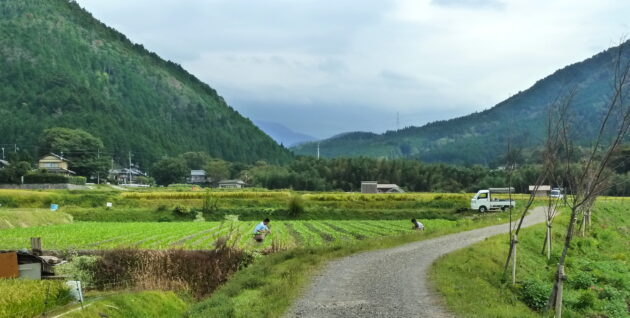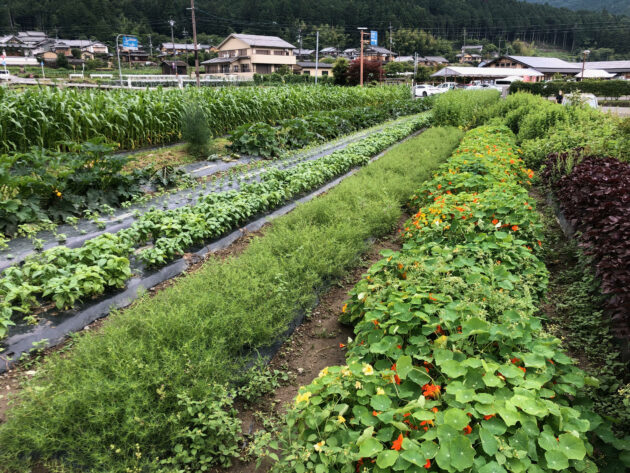
If Japan is considered a super-aged society, the agricultural population could be described as hyper-aged. However, a small but definite intergenerational shift is cause for optimism. Throughout Japan, a new wave of people from non-farming backgrounds are choosing to get their hands deep into the soil, many practicing organic agriculture.
“Organic” is a legal term; its use requires official certification. While certification has advantages, many farmers in Japan choose to forgo it—either because of associated costs, or based on their business model.
Many “organic” farmers rely on a network of personal relationships where trust does not depend on a third-party-issued logo. Their products can be described as “vegetables grown without the use of synthetic pesticides or fertilizers,” but what is offered is not a production method, but something like an art or craft item that reflects the farmer’s relationship with their land. The product’s value is evident in its taste, and a unique quality reflecting the personality of the farmer who grew it.
This is a whole new attitude, different from when people used to think of organic products as inherently bug-eaten and “less perfect,” but safe.
“Conventional farmers want to minimize their use of chemicals, but are afraid they will be unable to sell their produce if they stop,” says an organic farmer in northern Kyoto. “They ask me how it’s possible to grow such beautiful vegetables without pesticides.” Today, many farmers prefer not to sell their products boxed with others’ similar produce at the wholesale market, distinguished only by the label designating their prefecture. This is not to downplay the importance of the wholesale market system, but to rather emphasize an entirely different relational system —one where consumers can put a face to a carrot by how it looks and tastes.
Many young “organic” (both certified and non-certified) farmers have established themselves in Ohara, a farming community less than 20km northeast of central Kyoto. Supporting their success is the Ohara Sunday morning market. Kyoto chefs visit the market in search of fresh seasonal produce, the young farmers learn what they are looking for, and niches and relationships are established, allowing consumers to place particular vegetables in the greater ecosystem of Ohara, in connection with its climate and people.

For farmers in more remote locations, however, rising shipping costs have made market access even more challenging than before. In response, a growing number of small artisanal vegetable shops in Kyoto have built a collaborative produce collection and distribution system. It’s economical for the shop owners, and improves market access for smaller and beginning farmers. The shop owners pride themselves on knowing about the sources of their products, why these tomatoes are so sweet, or what this farmer uses for fertilizer.
Motivated by both environmental and economic concerns, Japan’s government recently issued an ambitious plan to increase organic agriculture—currently less than 1% of the total cultivated area—to 25%, by 2050. This sudden announcement invited a lot of skepticism. As a proponent of food grown through ecologically/culturally sound and socially just relationships, I hope we can protect and further develop agriculture based on close personal relationships, rather than merely promoting a mass-produced “organic” label, devoid of connections between face and place.




